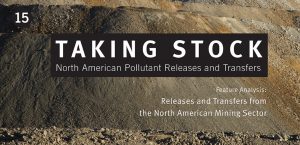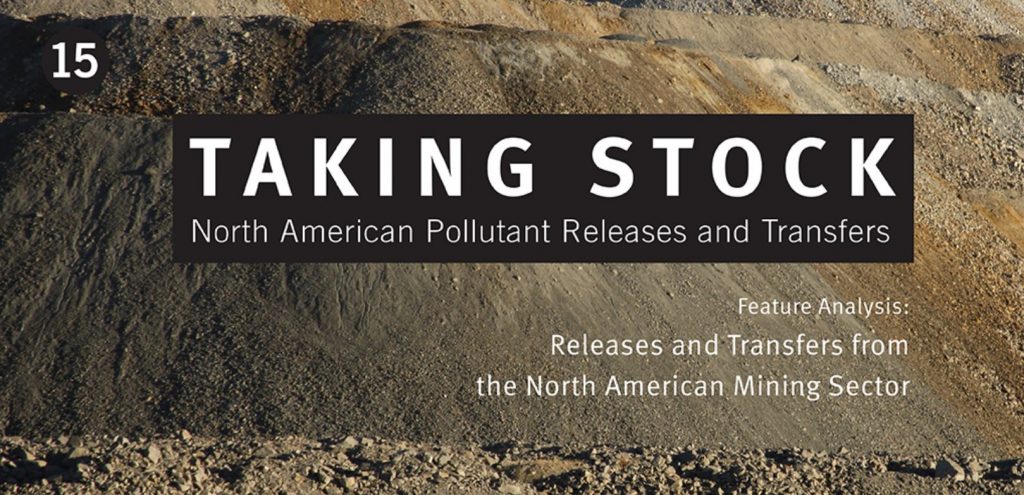
MONTREAL – With Earth Day fresh in our memories, the
Commission for Environmental Co-operation (CEC) has released its 15th report
Taking Stock: North American Pollutant Releases and Transfers. The organization represents Canada, the United States and Mexico pulling the entire continent together to understand and reduce sources of pollution.
The CEC analyzed pollutant data reported for approximately 27,000 industrial facilities in the three countries as they are reported to their national pollutant release and transfer registers.
The
Taking Stock report aims to foster greater understanding of the amounts, sources and management of industrial pollutants with the objective of increasing the cross-border dialogue and supporting decisions related to pollution prevention and reduction.
Here are some of the key findings in the report:
- The 27,000 industrial sources released more than 5 billion kg of pollutants in 2013, the latest year for which data is available.
- About 25 individual pollutants from a relatively small number of industry sectors were responsible for more than 90% of the material released. (Due to differences in reporting requirements, there were data gaps for a number of key industry sectors and pollutants.)
- Data from the mining sector in 2013 indicate that the industry accounted for about 1.67 billion kg – about one-third – of the total releases and transfers. About 99% of that was disposal on land. (Data from the Mexican mining sector was particularly absent.)
Using the interactive tools on the
www.CEC.org website, it is possible to isolate what kinds and how much pollution is generated by the Canadian mining industry. Worst of all is the 147,300 tonnes of phosphorous released. As far as metals and their compounds go, we release a lot to the environment – in the neighbourhood of, 16,200 tonnes of lead, 51,200 tonnes of nickel, 94,100 tonnes of copper, 329,700 tonnes of manganese, 21,200 tonnes of cobalt, 51,300 tonnes of zinc, 19,700 tonnes of arsenic, and more. Those are metals we might be recovering and selling.
Assembling all this data is a noble undertaking. The question then becomes what to do with it.
The Canadian mining industry has made great strides in environmental protection over the last 20 or 30 years, but it is a moving target. No sooner do we meet one set of goals than new regulations set new goals. Or local communities demand more protection – for their land, culture and way of life – going forward.
Thankfully the days of being robber barons are behind us.
As an industry we know that resources will stay in the ground unless we can gain a social and environmental licence to develop them sustainably. And the first step toward sustainability must always be to understand the problem.
We urge all our
CMJ readers to peruse the report thoughtfully at
Taking Stock: North American Pollutant Releases and Transfers.
With better understanding come better solutions.


 MONTREAL – With Earth Day fresh in our memories, the Commission for Environmental Co-operation (CEC) has released its 15th report Taking Stock: North American Pollutant Releases and Transfers. The organization represents Canada, the United States and Mexico pulling the entire continent together to understand and reduce sources of pollution.
The CEC analyzed pollutant data reported for approximately 27,000 industrial facilities in the three countries as they are reported to their national pollutant release and transfer registers.
The Taking Stock report aims to foster greater understanding of the amounts, sources and management of industrial pollutants with the objective of increasing the cross-border dialogue and supporting decisions related to pollution prevention and reduction.
Here are some of the key findings in the report:
MONTREAL – With Earth Day fresh in our memories, the Commission for Environmental Co-operation (CEC) has released its 15th report Taking Stock: North American Pollutant Releases and Transfers. The organization represents Canada, the United States and Mexico pulling the entire continent together to understand and reduce sources of pollution.
The CEC analyzed pollutant data reported for approximately 27,000 industrial facilities in the three countries as they are reported to their national pollutant release and transfer registers.
The Taking Stock report aims to foster greater understanding of the amounts, sources and management of industrial pollutants with the objective of increasing the cross-border dialogue and supporting decisions related to pollution prevention and reduction.
Here are some of the key findings in the report:
Comments